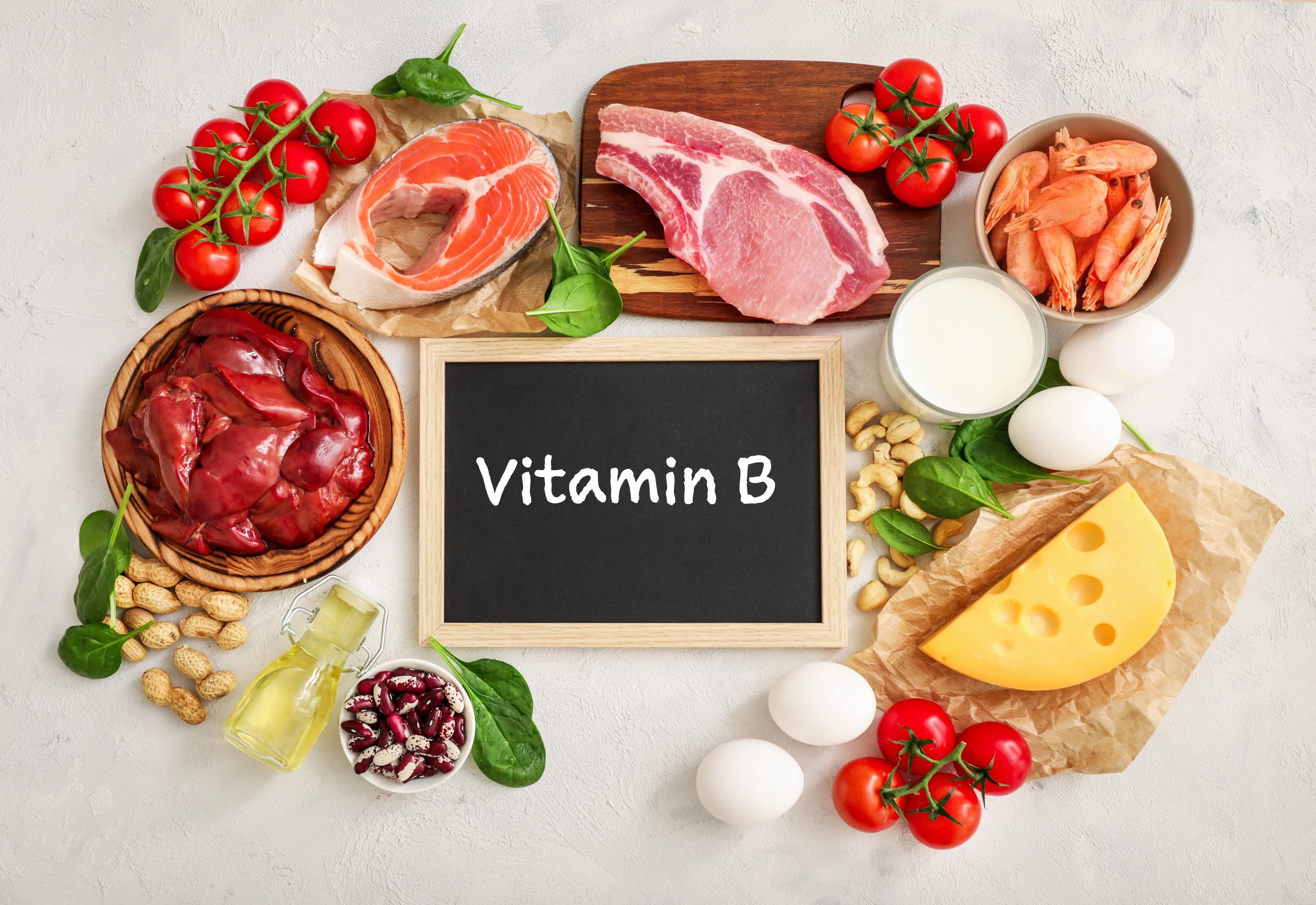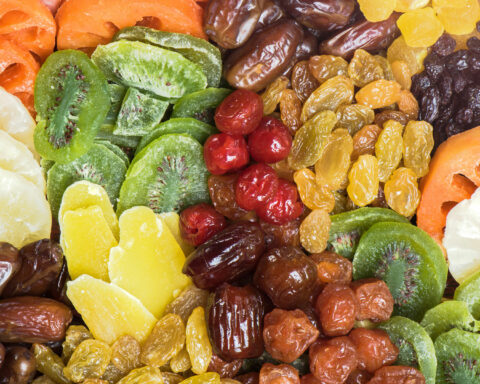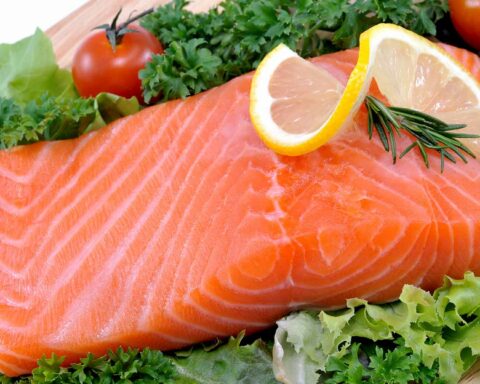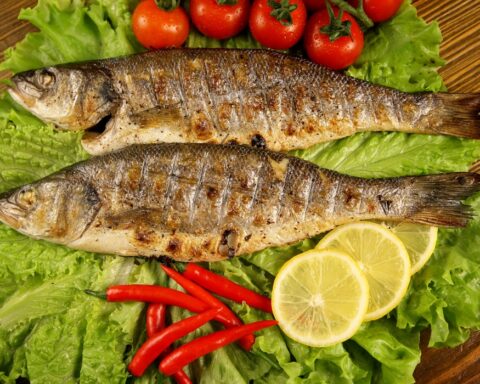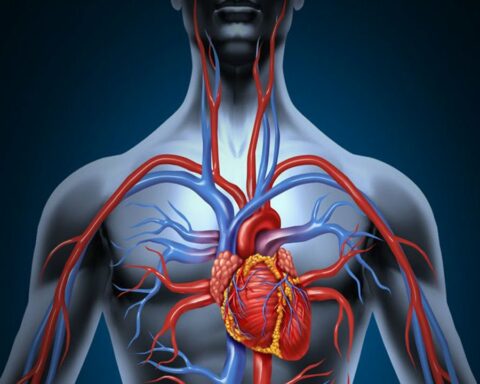Vitamins are micronutrients, meaning that they are needed only in small amounts. There are several types of vitamins, B vitamins being one of them. They are essential for human growth, metabolism, and other vital body functions.
B vitamins are a group of eight vitamins, collectively referred to as B complex vitamins. This include vitamin B1 (thiamine), vitamin B2 (riboflavin), vitamin B3 (niacin), vitamin B5 (pantothenic acid), vitamin B6 (pyridoxine), vitamin B7 (biotin), vitamin B9 (folate), and vitamin B12 (cobalamin). While each of the B vitamins has specific functions, generally they are involved in energy production and molecular synthesis at the cellular level. Only vitamin B12 can be stored by your body while the rest need to replenished consistently to avoid deficiencies. You can obtain them from foods, especially those containing at least 20% of the Recommended Daily Value (RDV) per serving. This article discusses top foods rich in B vitamins.
1. Salmon
Salmon is a popularly eaten fish in most parts of the world. It is a fatty fish providing healthy fats. A serving of cooked salmon weighing 100 g provides 18 percent of the RDV for vitamin B1, 29 percent of the RDV for vitamin B2, 50 percent of the RDV for vitamin B3, 19 percent of the RDV for vitamin B5, 47 percent of the RDV for vitamin B6, 51 percent of the RDV for vitamin B12. Additionally, this delicious seafood is low in mercury and boasts high amounts of omega-3 fatty acids, protein, and selenium.
2. Leafy Greens
There are several leafy greens you can use to fetch high amounts of vitamin B9 (folate). The best ones include raw spinach provides 41 percent of the RDV in a serving of 85 g; cooked spinach provides 31 percent of the RDV in a serving of 85 g; cooked collard greens provide 20 percent of the RDV in a serving of half a cup; cooked turnip greens provide 25 percent in half a cup; and raw romaine lettuce provide 29 percent in a serving of two cups. It is worth mentioning that heat and prolonged cooking destroys folate content in leafy greens. To maintain folate content during cooking, it will be best to steam the greens lightly.
3. Organ Meats Like Liver
Organ meat is not as popular as other parts of the meat. But they are loaded with lots of B vitamins. Liver in particular is packed with several B vitamins. Just 100 g of lover from beef provides 12 percent of the RDV for vitamin B1, 201 percent of the RDV for vitamin B2, 87 percent of the RDV for vitamin B3, 69 percent of the RDV for vitamin B5, 51 percent of the RDV for vitamin B6, 138 percent of the RDV for vitamin B7, 65 percent of the RDV for vitamin B9, and 1,386 percent of the RDV for vitamin B12. If eating organmeats feel gross to you, it will help mixingit with ground meat or chili to make them tastier.
4. Eggs
Eggs are a versatile food and provides healthy nutrients, including B vitamins. For example, one large egg contains 33 percent of the RDV for vitamin B7. This is true when you take both egg yolk and white. Apart from liver, eggs are one of the best sources of vitamin B7. It is also loaded with decent amounts of other B vitamins. For example, one large cooked egg weighing 50 g, provide 15 percent of the RDV for vitamin B2, 7 percent of the RDV for vitamin B5, 33 percent of the RDV for vitamin B7, 5 percent of the RDV for vitamin B9, and 9 percent of the RDV for vitamin B12. Studies have shown that avidin – which is a protein that inhibits absorption of vitamin B7 – is present in raw egg whites. To inactivate this protein, you will want to properly cook eggs. Some people don’t consume eggs, meat, or animal products, making it hard to meet biotin needs. However, including certain foods like fruits, vegetables, whole grains, seeds, and nuts can help solve this problem.
5. Milk
Just 240 ml of milk contains 26 percent of the RDV for vitamin B2, alongside other B vitamins like 7 percent of the RDV for vitamin B1, 9 percent of the RDV for vitamin B5, 18 percent of the RDV for vitamin B12. Studies indicate that milk is the best source of vitamin B2. Meat and grains are next in that list. Additionally, milk is also an excellent source of vitamin B12, which your body absorbs best by up to 79 percent.
6. Beef
Beef is one of the most consumed food in the world. It can significantly help provide the needed amounts of B vitamins. Evidence suggests that in many countries of Europe, people use beef as the main source of vitamin B1, B3, and B6. 100 g of sirloin steak contains 5 percent of the RDV for vitamin B1, 8 percent of the RDV for vitamin B2, 39 percent of the RDV for vitamin B3, 6 percent of the RDV for vitamin B5, 31 percent of the RDV for vitamin B6, 29 of the RDV for vitamin B12.
7. Oysters, Mussels, and Clams
This combo is a perfect source of both vitamin B2 and vitamin B12. They also contain decent amounts of thiamine, niacin, and riboflavin. 100 g of cooked oyster provides 8 percent of the RDV for vitamin B1, 26 percent of the RDV for vitamin B2, 18 percent of the RDV for vitamin B3, 4 percent of the RDV for vitamin B9, and 480 percent of the RDV for vitamin B12. The same serving of cooked mussels contains 20 percent of the RDV for vitamin B1, 25 percent of the RDV for vitamin B2, 15 percent of the RDV for vitamin B3, 19 percent of the RDV for vitamin B9, and 400 percent of the RDV for vitamin B12. Clams also provide these vitamins in decent amounts, apart from vitamin B12 which is about 1,648 percent.
Conclusion
B vitamins are a variety of vitamins that help your body in a number of activities, such as metabolism. You can meet your B vitamins needs by eating foods healthy foods like salmon, beef, and organ meats. These vitamins should constantly be replenished as the body is not able to store them.
- Products That Assist with Stress Relief - September 21, 2023
- TRÈFLE – THE ROAD TO THE 15TH - July 29, 2023
- Lovingly thought out educational toys - July 5, 2023

